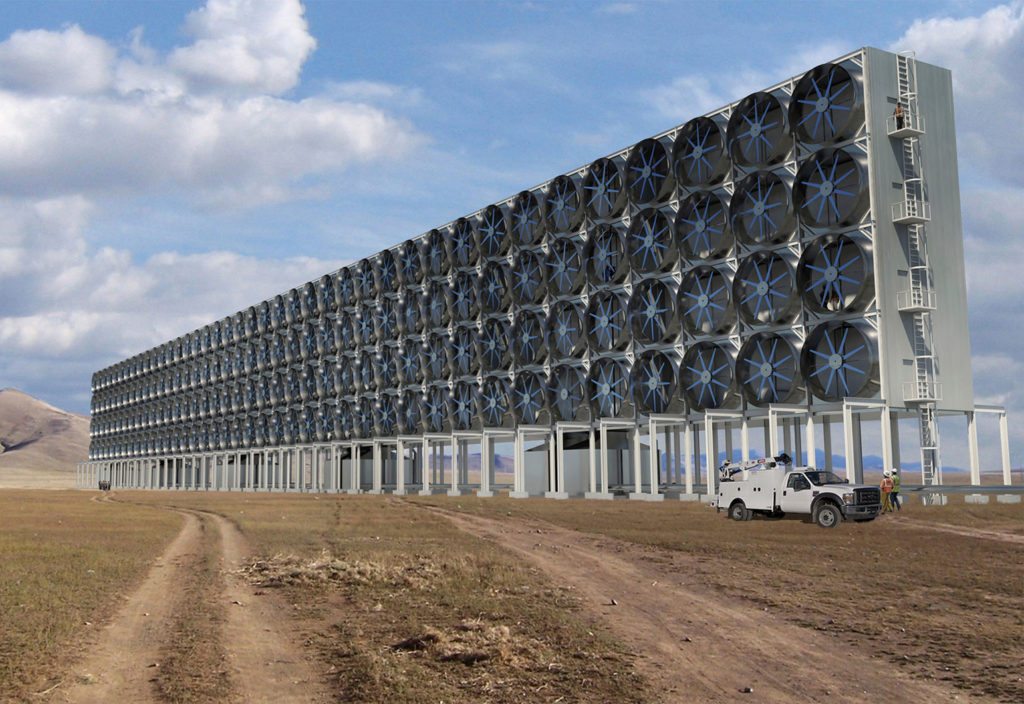Technologies that remove carbon dioxide from the air to make fuel are attracting a lot of attention. But what are the costs, and how do they compare to other carbon dioxide removal methods?
According to the Intergovernmental Panel on Climate Change (IPCC), to limit the temperature rise to 1.5°C above pre-industrial levels, the world will need to both slash emissions and remove carbon dioxide (CO2) from the atmosphere.
Carbon dioxide could be removed by planting trees and improving agricultural practices to store carbon in plants and soils, and technologies to capture carbon dioxide from the air or fossil fuel exhausts could also play a part.
While direct air capture is a new technology, a prototype demonstration plant built by Canadian company Carbon Engineering has been extracting and purifying CO2 from the air since 2015, and converting it into fuel since 2017. The plant is backed by a bevy of high-profile investors, including BHP, Bill Gates and Chevron.
Barry Hooper, a chemical engineer and former Chief Technologist of the Cooperative Research Centre for Greenhouse Gas Technologies, said direct air capture (DAC) technology could be useful for “hard-to-capture” emission sources such as long-haul air travel.
“If you can make jet fuel out of CO2 that’s been taken from the atmosphere, then when that’s burned and goes back to the atmosphere you have a carbon-neutral situation,” he told create.
Energy intensive process
Using CO2 from the air to produce fuel requires a lot of energy, which can be expensive, although using solar panels or wind generation to power the process keeps costs down.
For example, Carbon Engineering’s process dissolves CO2 from the air in an alkaline solution to form carbonate, which is then converted to a solid salt and heated to more than 900°C to produce pure CO2 for fuel production.
If DAC technology plays a leading role in limiting the global temperature rise, its energy consumption could skyrocket. A recent study found that in 2100, DAC machines could require up to 300 exajoules (over 833 million TWh) – more than half of the world’s current total energy demand.
“Large-scale deployment of DAC in below 2°C scenarios will require a lot of heat and electricity and a major manufacturing effort for production of CO2 sorbent,” said study author Ajay Gambhir, adding that a full life-cycle assessment of the technology is needed to understand its resource implications.
In response, researchers are working on more energy-efficient ways to convert atmospheric carbon to fuel. One process recently developed by the University of Toronto uses a bipolar membrane electrolyser to convert dissolved carbonate directly to CO2 – saving energy by cutting out the heating step. A silver-based catalyst in the electrolyser converts the extracted CO2 into syngas, which can be used to make jet fuel or plastics.
According to Deputy Chair of Engineers Australia’s Environmental College Lara Harland, a significant output per unit of energy input will be key to the success of new DAC technologies.
Direct air capture vs carbon capture and storage
By comparison, using carbon capture and storage (CCS) technologies to remove CO2 from industrial exhaust gases would have a greater impact than sucking it out of the air at a distance from the source, according to environmental engineering consultant and Engineers Australia Victorian Division President Grant Scott.
“Every fossil fuel plant spits out an exhaust about 200 times richer in CO2 than air. Cement, [brown] hydrogen and ammonia plants have almost pure CO2 exhaust, which is 2000 times richer in CO2 than air,” he said.
CCS technologies have been around for several decades and have been used in Europe and the US to remove and store hundreds of thousands of tonnes of CO2 per year. DAC is yet to be deployed at these scales; the Carbon Engineering pilot plant captures and purifies around 1 ton (0.9 tonne) of CO2 a day, or around 330 tonnes per year.
There are also significant differences in the cost of CCS and DAC technologies. Hooper is in the process of commercialising a CCS technology that uses a new kind of solvent to absorb CO2. He told create that his process was likely to cost around $35 to $50 per tonne of CO2.
By comparison, Carbon Engineering stated in Joule last year that their DAC process costs from $138 to $340 per tonne, and other literature estimates that DAC processes could cost anywhere between $73 and $1468 per tonne.
Finding the right balance
The IPPC stated that net CO2 emission reduction models that limit global warming to 1.5°C involve portfolios of mitigation measures that strike “different balances” between lowering energy and resource intensity, rate of decarbonisation and reliance on CO2 removal.
Hooper said that while DAC could have a place as a niche CO2 removal technique, long-term reductions would be largely sustained by capturing carbon and storing in geological structures. He added that CO2 removal techniques could co-exist with the transition to renewable energy.
“You could do them in parallel and they could live together. They don’t have to be an either-or,” he said.
Harland emphasised the importance of deploying all possible means to stop emissions rising and work towards carbon removals that exceed emissions.
“All technologies must be included in our weaponry, and DAC is no exception,” Harland said.
“It is not, however, a panacea to continue burning fossil fuels.”
